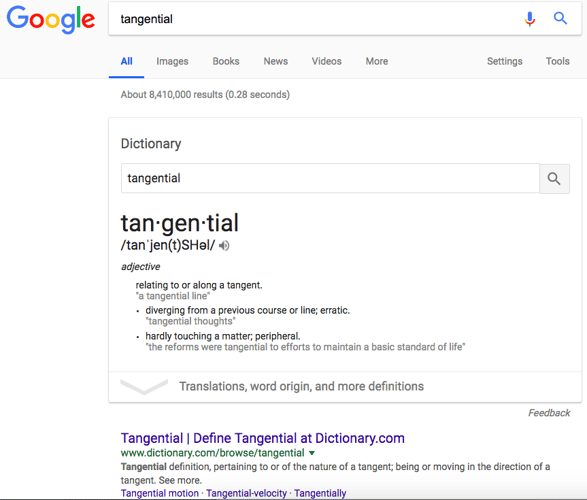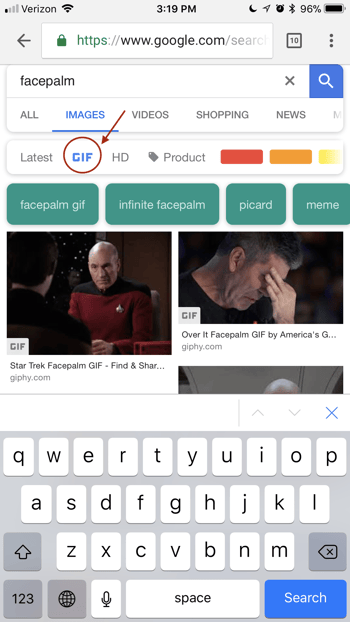We’ve put together another list of the major highlights from Google — this time, for the month of March. Read on for the full recap.
March News About Google
1. Is This the End of Search Results as We Know Them?
On March 14th, my colleague Victor Pan (HubSpot’s head of search) shared a SERP screenshot that suggested Google might be experimenting with the idea of no search results — just one answer to a query.
That day, in response to the query, “What time is it?”, many users reported seeing a SERP with just the answer to the question displayed — and no ranked pages below it, with only a single button to click for more results displayed instead.
.png?t=1524176802870&width=600&height=300&name=Pasted%20image%20at%202018_03_14%2010_15%20AM%20(1).png)
Apparently, one of those users was Dr. Peter J. Meyers, who the next day wrote a post for Moz describing the “zero-result SERP … future we should’ve known was coming.”
In it, he pointed out that results similar these aren’t exactly new. For months now, we’ve been writing about the growing importance of the featured snippet, and last month reported that Google would be testing double featured snippets to help answer questions with different connotations or intentions.
And while the absence of additional displayed results below the Knowledge Card (the information box where quick answers or featured snippets are displayed) is new, it was a temporary experiment, said Google Public Search Liaison Danny Sullivan — one that was limited to queries like time, calculations, and measurement unit conversions.
Update! We have enough data and feedback — which is appreciated — to conclude that the condensed view experiment should stop for now. The team will look at improving when and how it appears.
— Danny Sullivan (@dannysullivan) March 20, 2018
But not long after this experiment took place, Dictionary.com, a site beloved by word nerds everywhere, announced that it was up for sale: perhaps, suggested Pan, as part of the road toward the zero-result SERP.Ever typed a word you didn’t completely understand into the Google search bar? If so, you likely received a Knowledge Box result containing the definition.

The sale made us all wonder if sites that were designed to provide information increasingly provided in Knowledge Cards — time and date, travel reservations, or measurement unit conversions — are going to face a similar fate in the not-so-distant future.
And while Sullivan said that the experiment has ended, we wouldn’t be surprised to see more zero-result SERPS in the future — and when we do, we’ll report on it.
2. The Google News Initiative
Google also announced a new initiative last month to partner with and help news publishers grow, aptly named the Google News Initiative.
It includes several parts, like Subscribe with Google, which is expected to help users subscribe to digital news content from different outlets more easily.
And in addition to making the subscription process more seamless for readers, one goal of the new subscription program is to help publishers grow their audiences, partly with a new feature the search engine giant is testing to measure a user’s “Propensity to Subscribe” through machine learning.

Source: Google
The initiative also includes new analytics available to publishers by way of the News Consumer Insights dashboard within Google Analytics. The additional data will display subscription-oriented metrics, like audiences size and segmentation, as well as the best ways to reach and engage those audiences in a way that can help convert them to subscribers.
Another major goal of the Google News Initiative is to combat the spread of false news or misinformation, again, with the help of machine learning that Google says is able to recognize the most authoritative content during breaking news events. That should result in the promotion of content from Google’s verified news sources displayed in a “Top News” shelf.
These efforts include several partnerships with journalism-focused organizations and certain publications, like First Draft, with whom Google formed the Disinfo Lab to help detect and limit the amount of misinformation users are exposed to, especially during major events like elections.
Google has also partnered with the Poynter Institute, Stanford University, and the Local Media Association to form MediaWise: an initiative to help younger news consumers understand the veracity (or lack thereof) of different news items.
3. Send and Request Money Through Google Assistant
If you’re anything like I am, chances are, you rarely carry cash. Split the bill without a credit card? Pay someone back for a soda or a beer right away without my phone and an app like Venmo? Sadly, I can barely remember such a time.
And now, Google has entered that arena, announcing last month that users could now use Google Assistant to send and request money.
The feature, which is currently only available in the U.S., requires the person starting the transaction to have a Google Pay account, which she’ll be prompted to create (if she doesn’t have one already) upon asking the assistant to send or request a payment to one of her contacts.
Once that process is complete, the recipient of the request or payment will receive either a text message or email — or a Google Assitant notification if they use it — with a prompt to complete the transaction.

Being able to send and receive payment to and from phone or email contacts isn’t new — platforms ranging from PayPal, to Messenger, to the aforementioned Venmo app have facilitated this type of transaction for quite some time now.
But by entering this space, Google is working toward eliminating the need for yet another sector of third-party apps and tools to complete payment transaction — especially among the user base already largely entrenched in the Google ecosystem. That will become especially true when the service becomes available through the Google Home smart speaker, which the company expects to take place within “the coming months.”
I should note that not all payment methods seem to work properly with this function — when I tried to use the credit card I have on file with Google Pay, for example, the Assistant let me know that I couldn’t use it for this transaction, though I couldn’t find an explanation or more information as to why.
4. The Tenor Acquisition
Around here, we absolutely love GIF images. We use them to express every emotion, from despair to elation, and frequently find that there’s no situation for which a good facepalm GIF isn’t an appropriate reaction.

Source: Reaction GIFs
Over the years, Google has made a few efforts to make it easier for users to find GIFs — one of the most memorable being the introduction of a quick, top-of-the-screen “gif” button to filter image results on its mobile platform.

Now, it seems that Google is trying to make it even easier for users to find GIF images, in part by way of a vertical integration with GIF image database Tenor.
Tenor is a GIF-image finder currently available through a number of messaging platforms, including Messenger and iMessage, where users can seamlessly search for and send these animated images to contacts within conversations and threads.
Google’s plans for the database are to help users “do this more effectively in Google Images as well as other products that use GIFs, like Gboard,” according to the official announcement.
If it sounds like a familiar move for Google, that’s because it is — if you review the other news items included above, it could be deduced that Google is making a number of changes to eliminate the need for third-party apps, from information sources for unit conversion, to payment platforms, to image search tools. The Tenor acquisition is just one example — and we anticipate seeing more.
5. Other Google News You May Have Missed
Wheelchair Accessible Routes Have Been Added to Google Maps
Google Maps has evolved quite a bit over the years, with different layers, route options, and transportation methods being added in ways that make it easy for everyone to travel. And ow, wheelchair accessible routes have been added, too. The new feature will show users which public transportation stations are the most accessible, for example, due to elevator availability or step-free entrances. Read full announcement >>
New Job-Searching and Recruiting Capabilities
Last year, Google announced that it would be launching Google for Jobs: a new type of Knowledge Card that would list job openings right in the SERP, depending on the search criteria (e.g., “marketing jobs in Boston”). Now, Google has unveiled a beta version of Hire by Google: a candidate discovery system that will help recruiters create a short list of previous applicants who would be strong candidates for new roles. The biggest benefit? Saving recruiters time, according to the statement, and helping them “easily identify and re-engage known candidates instead of spending time trying to find new ones.” Read full announcement >>
Where’s Waldo?
We’ll let you discover and enjoy this one for yourselves, folks. Read full announcement >>
Until Next Month
As always, we’re watching all things Google. We’ll continue to pick out top news items, algorithm updates, and trends that can aid your marketing.
And until those May flowers finally appear, have a great April.



